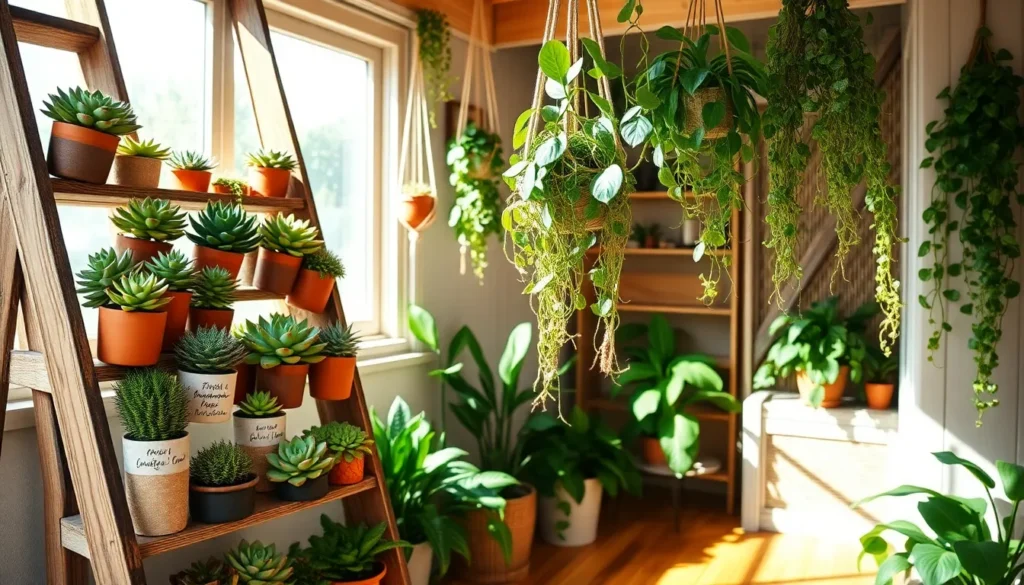Welcome to “Indoor Garden Ideas for Tiny Homes,” where the magic of gardening meets the coziness of compact living. Whether you’re just starting out on your green-thumb journey or you’re a seasoned gardener looking to adapt to a smaller space, this guide is your key to transforming even the tiniest nooks into lush, vibrant sanctuaries.
In the pages that follow, you’ll discover a treasure trove of creative design concepts that bring the joy of gardening right into your living room. These ideas are not just about aesthetics; they’re about maximizing space, improving air quality, and enjoying the therapeutic benefits of nurturing life within your home.
Imagine the satisfaction of harvesting fresh herbs from your kitchen windowsill or the delight of watching a cascade of greenery thrive in a sunlit corner. With practical tips and proven techniques, this guide empowers you to cultivate an indoor garden that not only beautifies your space but also enriches your life, proving that a flourishing garden is possible no matter the size of your home.
Maximize Vertical Space with Shelves
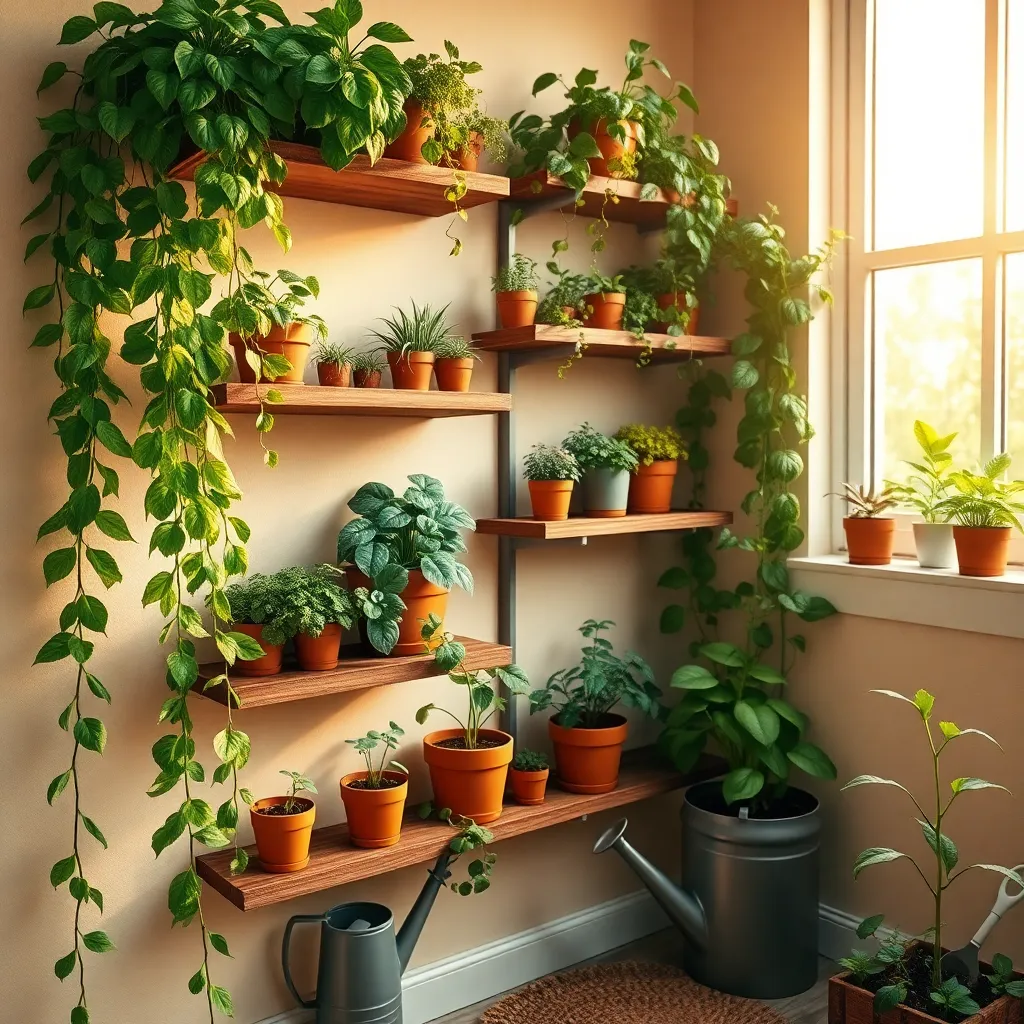
Maximizing vertical space with shelves is a brilliant way to expand your indoor garden without occupying precious floor area. Consider installing sturdy wall-mounted shelves that can support the weight of multiple potted plants, allowing you to create a lush, tiered display.
When selecting plants for your shelves, opt for those that thrive in the lighting conditions specific to your space. For low-light areas, choose plants like pothos or snake plants, while sunny spots are ideal for succulents and herbs such as basil and thyme.
Ensure your shelves are well-secured to prevent accidents, especially if you have pets or children. Use brackets or anchors suitable for your wall type, whether it’s drywall, wood, or concrete, to provide maximum stability.
Watering can be a challenge with shelves, so consider using self-watering pots or placing a tray beneath each plant to catch excess water. This method minimizes mess and ensures that your plants have consistent moisture without the risk of overwatering.
To enhance air circulation and prevent mold, leave enough space between each pot on the shelf. This arrangement not only benefits plant health but also creates a visually pleasing and balanced display.
Choose Low-Maintenance Indoor Plants
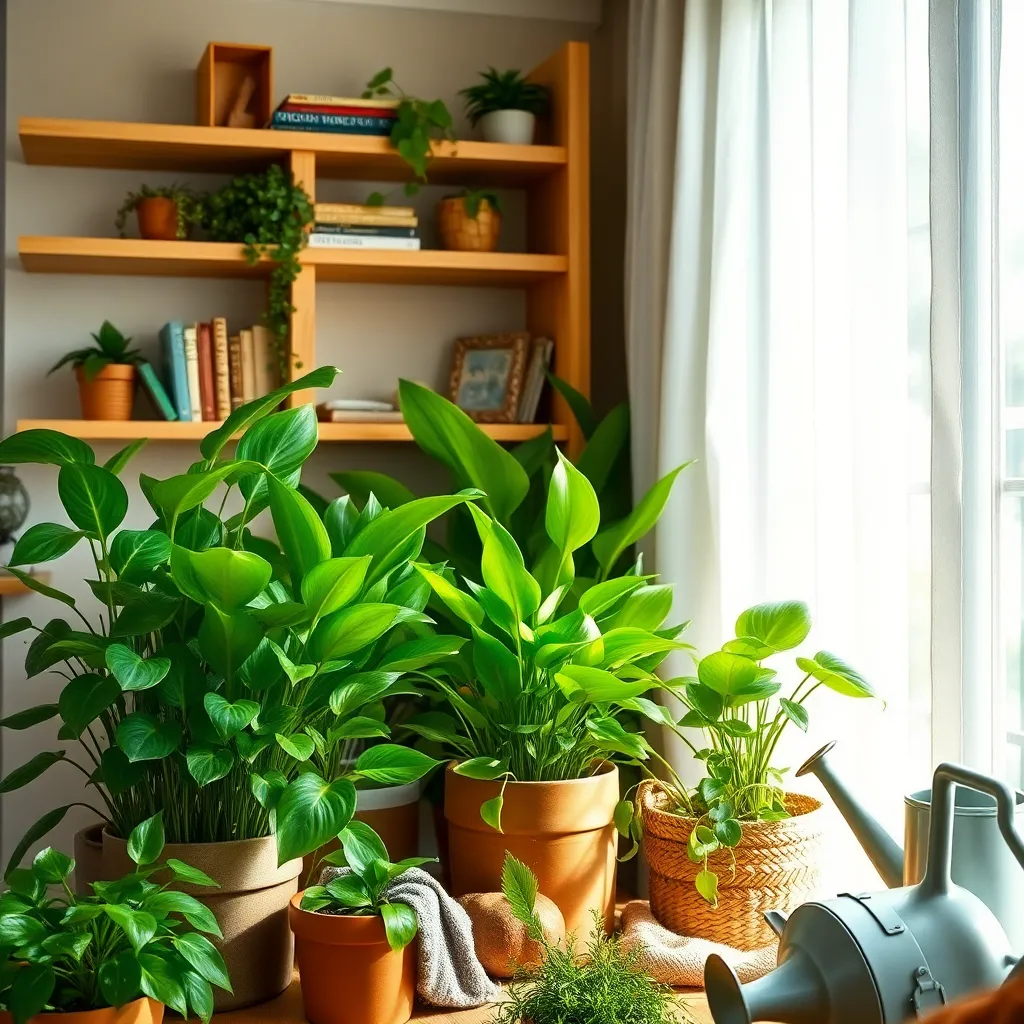
When space is limited, choosing low-maintenance indoor plants is key to maintaining a lush environment without overwhelming your schedule. Snake plants, for example, are ideal as they thrive with minimal care, requiring watering only every 2-6 weeks depending on the season.
An excellent choice for beginners, pothos plants adapt to low light and irregular watering schedules. They prefer a well-draining potting mix and can flourish even in less-than-ideal conditions, making them perfect for tiny homes.
For those who want a touch of greenery with minimal effort, consider the resilient ZZ plant. It tolerates neglect, low light, and infrequent watering, and can be potted in a standard indoor potting mix.
To elevate your indoor gardening, try growing succulents, which come in various shapes and colors and require little water. Ensure they are planted in a soil mix designed for cacti and succulents to avoid overwatering, keeping them vibrant and healthy.
Utilize Hanging Planters Wisely
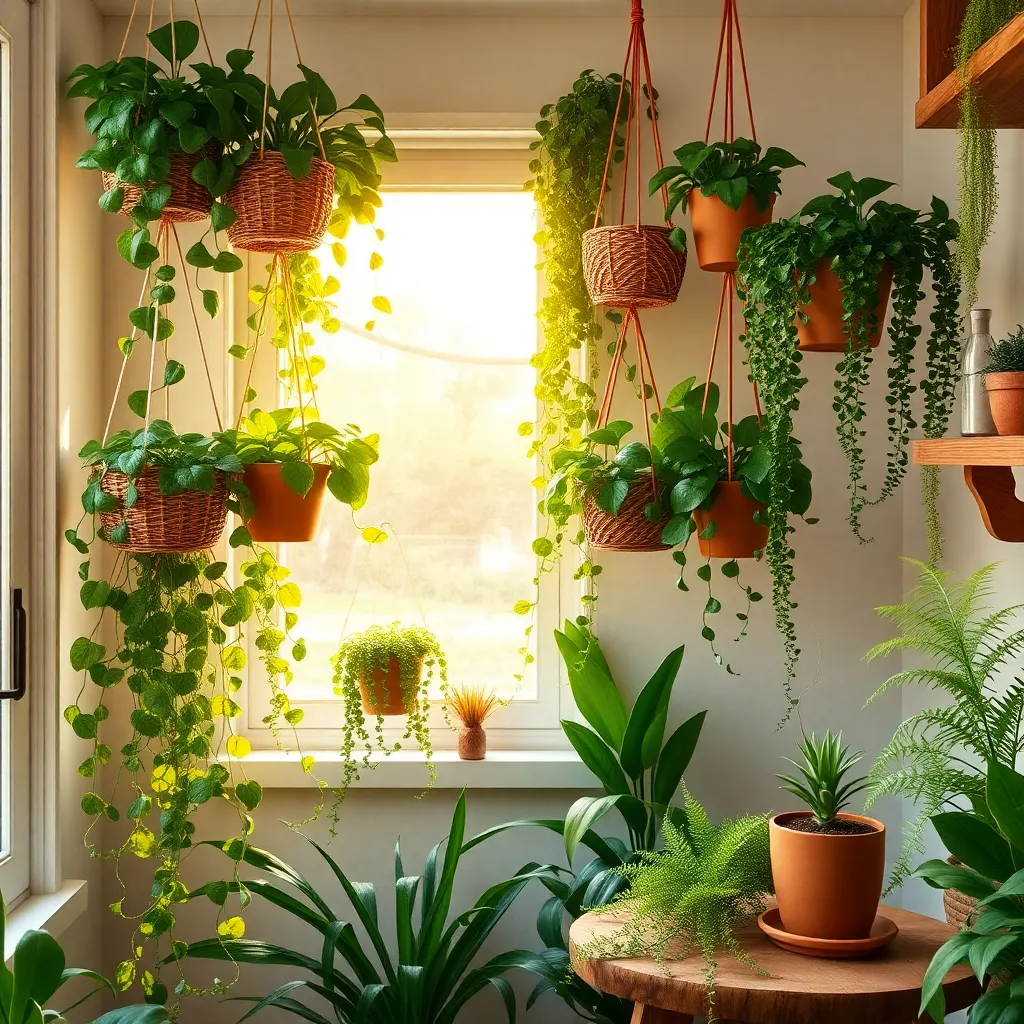
Hanging planters are an excellent way to add greenery to your tiny home without sacrificing floor space. Choose lightweight materials like plastic or fabric to prevent stress on your ceilings or walls.
For beginners, opt for hardy plants such as pothos or spider plants, which thrive in hanging environments. These plants require well-draining soil and should be watered when the top inch of soil feels dry to the touch.
Advanced gardeners can experiment with more demanding plants like ferns or trailing succulents. Ensure these plants receive the right balance of light and humidity to flourish in a suspended setting.
To enhance your hanging planters’ effectiveness, rotate them occasionally for even growth and exposure to light. This simple practice can prevent uneven growth and keeps your plants looking lush from all angles.
Incorporate Smart Lighting Solutions
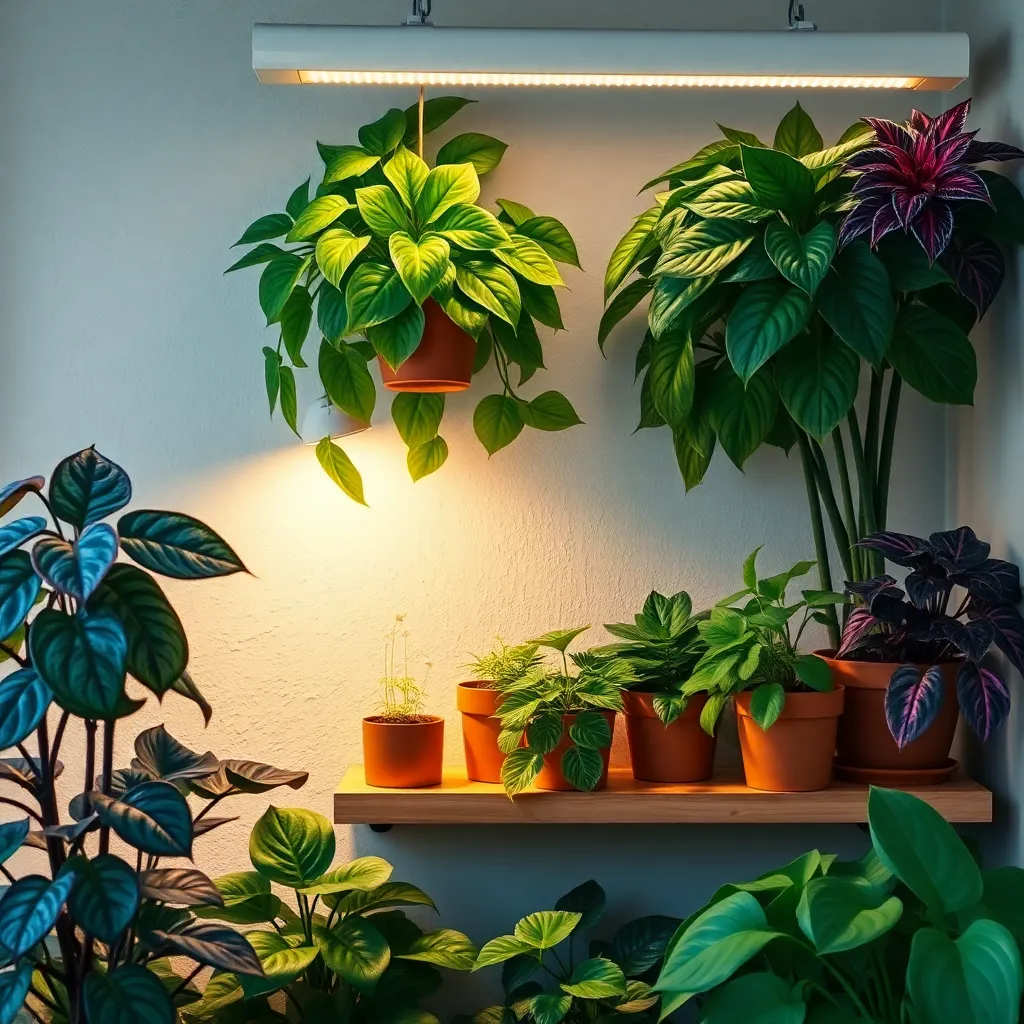
Smart lighting solutions can transform your tiny home’s indoor garden into a thriving oasis. Consider using energy-efficient LED grow lights to provide the necessary light spectrum that your plants need for photosynthesis.
For small spaces, clip-on grow lights are a versatile option, allowing you to position them precisely where your plants need the most light. This flexibility means you can adjust lighting as your plants grow, ensuring optimal light exposure at every stage of development.
Investing in a timer for your grow lights can help simulate natural daylight cycles, which is crucial for the growth of many plants. Set your grow lights to mimic daylight hours, typically 12-16 hours on and 8-12 hours off, depending on the plant species.
For advanced gardeners, consider using smart lighting systems that can be controlled via smartphone apps. These systems allow you to adjust light intensity and schedule from anywhere, optimizing plant growth even when you’re away from home.
Opt for Multi-Functional Furniture
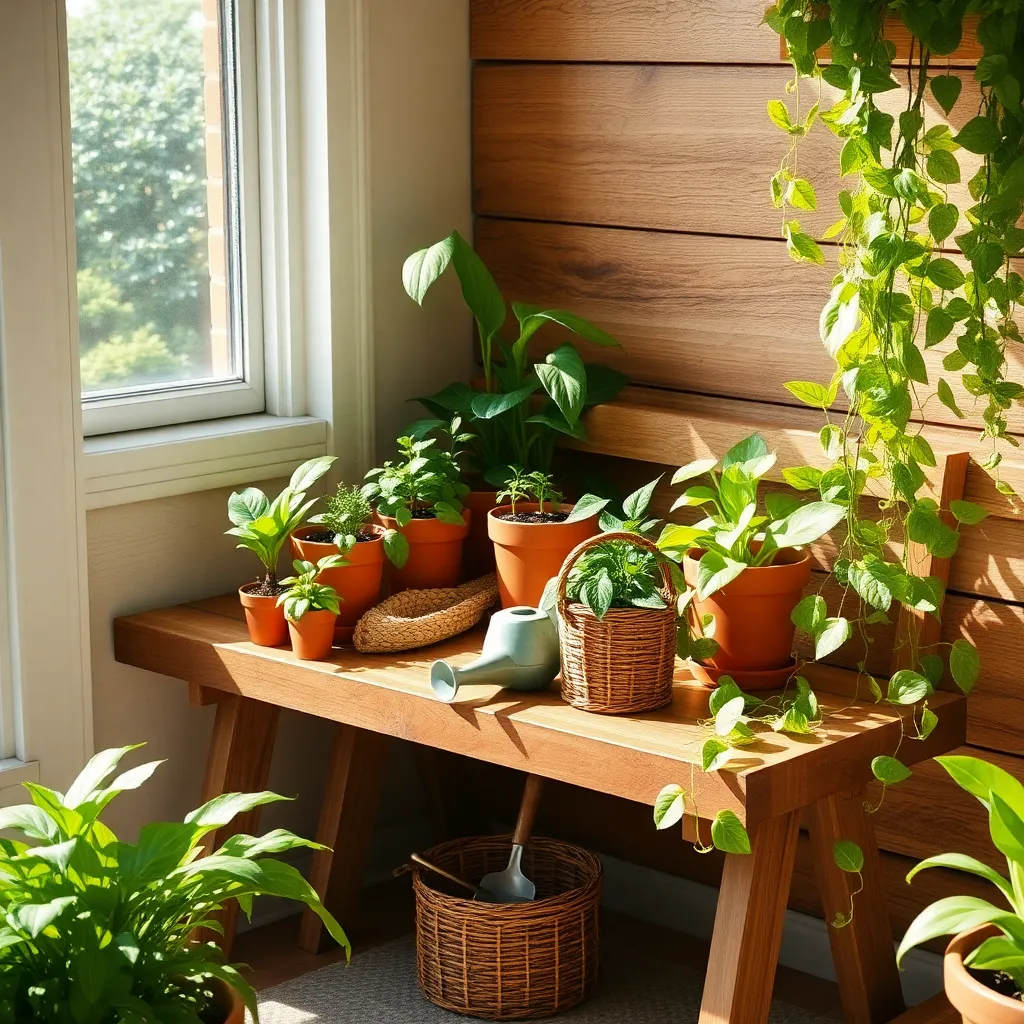
In a tiny home, every piece of furniture should serve more than one purpose, and this includes your indoor garden setup. Consider using a bench with built-in planters to provide both seating and a space for your plants.
Vertical garden shelves can act as room dividers, creating a sense of separation while maximizing your planting area. Opt for shelves with adjustable heights to accommodate different plant sizes and growing requirements.
Choose a coffee table with a hollow center to display small plants like succulents or air plants, bringing greenery into your living space without consuming extra room. Succulents thrive in well-draining soil and should be watered sparingly, making them ideal for such enclosed displays.
For a more advanced option, consider a hydroponic system built into a kitchen island or dining table. This setup allows you to grow herbs and leafy greens indoors, providing fresh ingredients for your meals. Ensure proper lighting and nutrient solutions are in place for optimal plant growth.
Conclusion: Growing Success with These Plants
In the enchanting world of indoor gardening for tiny homes, we’ve uncovered five key concepts that mirror the nurturing essence of flourishing relationships. First, adaptability teaches us to grow together, even in limited spaces. Second, choosing the right plants reminds us of the importance of aligning with our partner’s values and preferences. Third, creative use of vertical space highlights the art of finding solutions together. Fourth, maintaining a regular care routine emphasizes the necessity of consistent effort in relationships. Lastly, integrating plants into daily life symbolizes the joy of shared experiences and memories.
Now, take immediate action by selecting one small plant to start your indoor garden journey, fostering a shared project that can strengthen your bond. As you embark on this green adventure, remember to bookmark this article as your go-to guide, ensuring you have a resource to revisit as your garden—and relationship—flourishes.
Looking ahead, practicing these concepts can lead to a thriving partnership, where both love and greenery grow. Embrace this journey with an open heart, knowing that every plant nurtured is a step towards a more resilient and joyful relationship. 🌿💕

